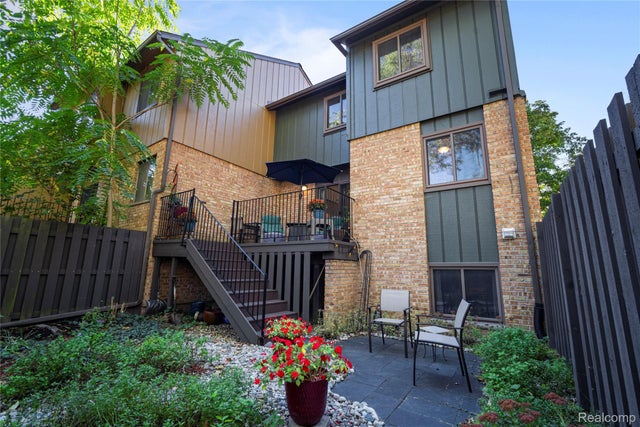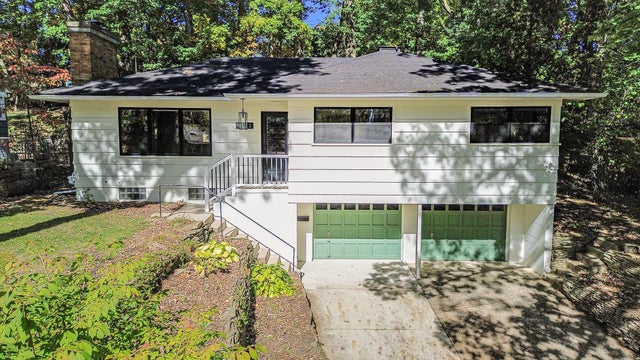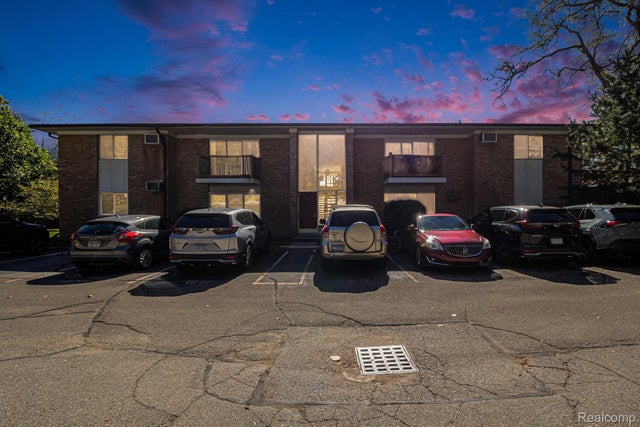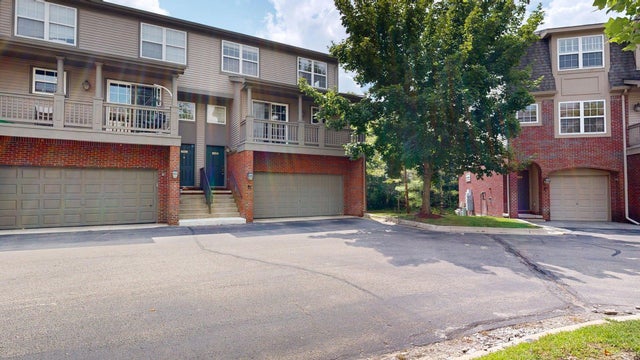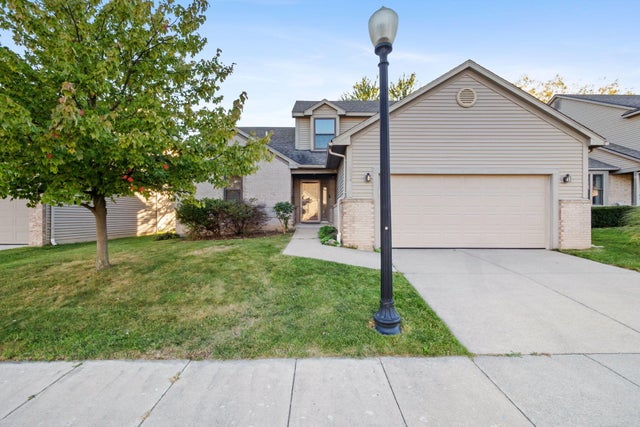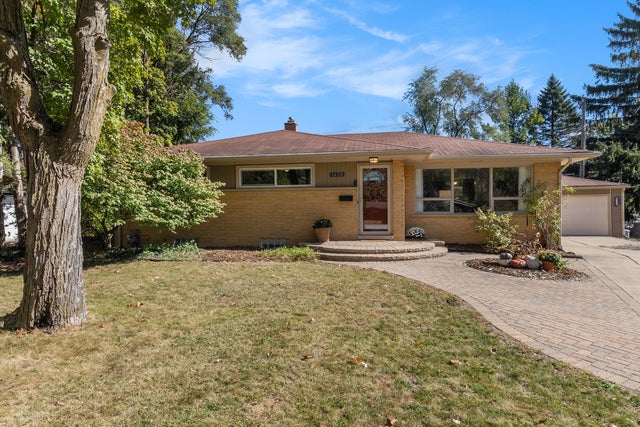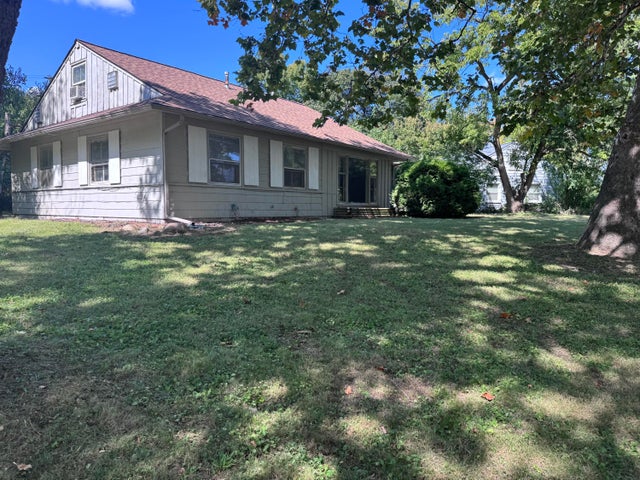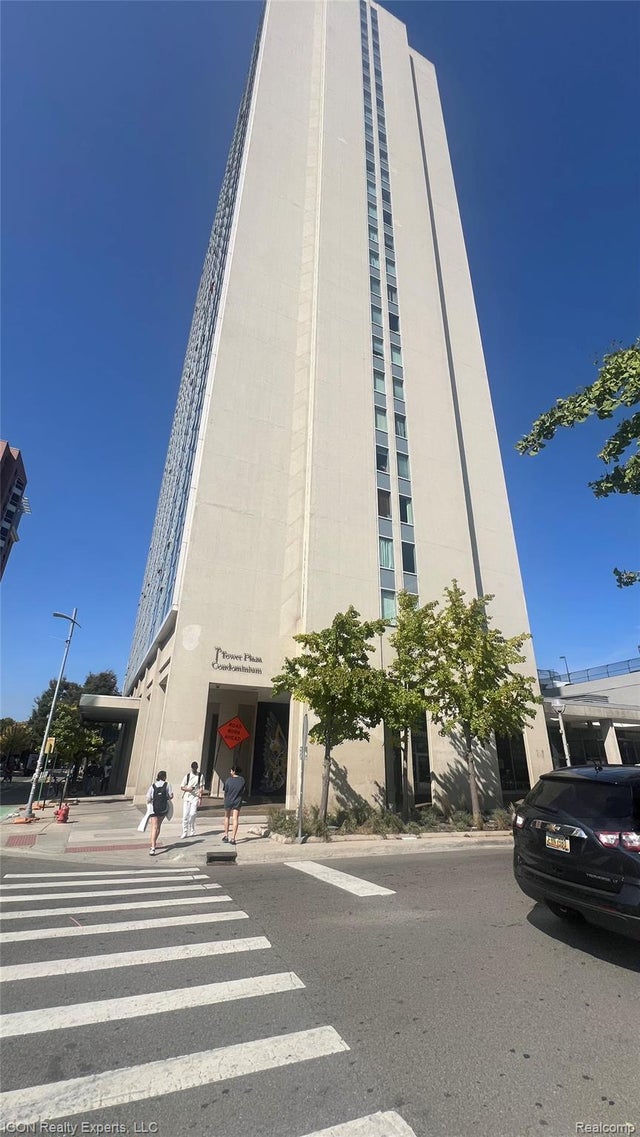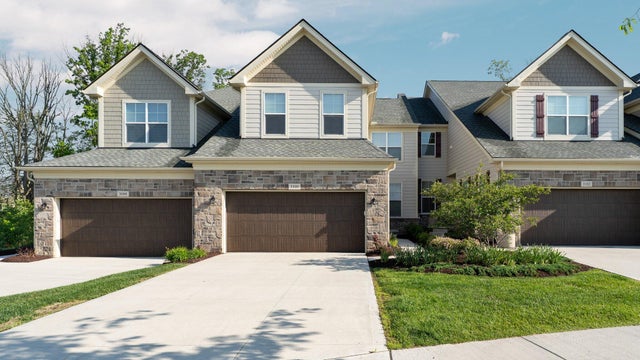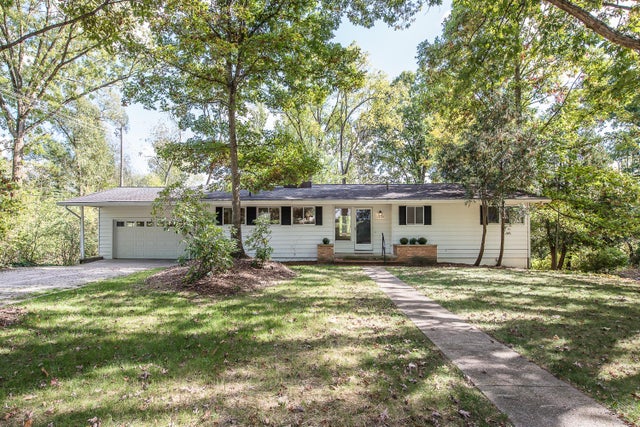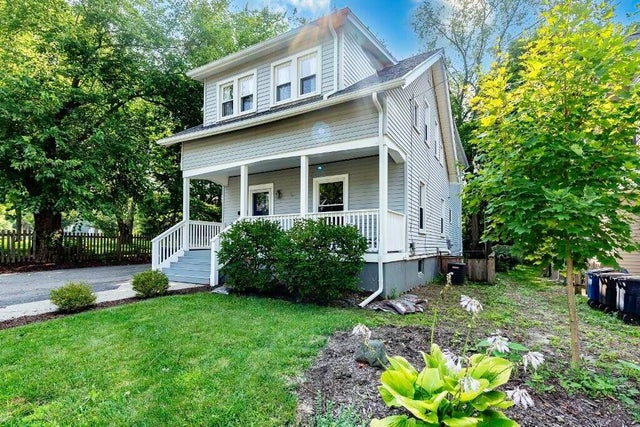Selling your home is a big decision, and timing can significantly impact your success. In Ann Arbor, Michigan, homeowners often ask: When is the best time to sell? This comprehensive guide will dive into updated 2024–2025 real estate data to answer that question with facts. We’ll explore Ann Arbor’s home prices, inventory, days on market, and buyer activity, and break down how spring vs. summer, fall, and winter market conditions stack up. We’ll also discuss how the University of Michigan’s academic calendar and other local events influence the market. Whether you own a single-family house, condo, townhome, or a luxury property, you’ll get actionable insights to determine the optimal time to list based on your home type, goals, and timing flexibility. Finally, we’ll highlight The Perna Team’s proven track record in Ann Arbor and why we’re a trusted choice for sellers. Let’s jump in!
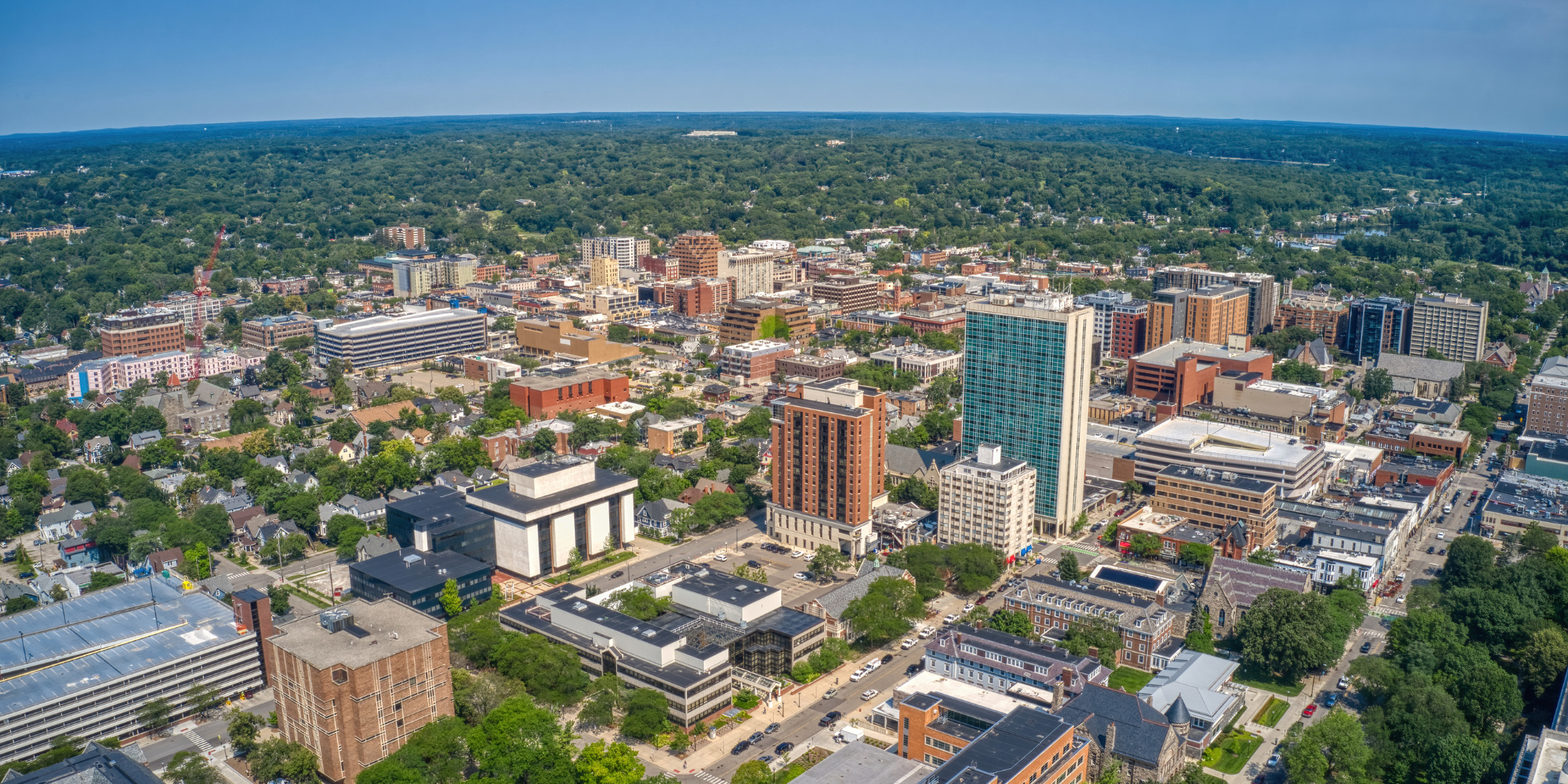
Ann Arbor Housing Market Trends (2024–2025)
Ann Arbor’s real estate market has been strong and competitive over the past year. Despite higher mortgage rates in 2024, home values continued to edge up thanks to limited supply and steady demand. Early 2025 data show the market remains tilted in sellers’ favor, even as it stabilizes slightly compared to the frenzy of 2021–2022. Here’s a snapshot of recent trends:
- Home Prices: Ann Arbor home prices have risen modestly. As of early 2025, the median sale price is around $475,000, up about 2–4% from a year earlier. For example, Redfin reports a median of $475K in Feb 2025 (2.2% higher year-over-year). Rocket Homes similarly notes a median sold price of about $510,856 in April 2025, ~2.4% above April 2024. Zillow’s Home Value Index puts the typical Ann Arbor home value at $526,671, up 3.9% in the past year. This growth, though not double-digit, means sellers have more equity than a year ago and home values are at record highs. (By comparison, Ann Arbor’s median price is about 16% higher than the U.S. median, reflecting the area’s desirability.)
- Inventory Levels: Housing supply in Ann Arbor remains very low, which is a key factor driving the seller-friendly conditions. At the end of April 2025, there were only ~289 homes actively for sale in Ann Arbor – a low number for a market of this size. Inventory did tick up in spring 2025 (the number of homes for sale in April was nearly 39% higher than in March as new listings hit the market), yet buyers still have limited options. In a balanced market for a city like Ann Arbor, we’d expect significantly more inventory. This scarcity gives sellers an edge. For context, Ann Arbor has remained a seller’s market throughout the past year, meaning demand exceeds supply. Even though more sellers are listing in spring 2025, the market is far from oversaturated – there are still more buyers than homes available.
- Days on Market: Homes are selling quickly, though a bit slower on average than last year. In spring 2024, Ann Arbor homes were flying off the market in about a month or less on average. By early 2025, the average time to sell has lengthened somewhat. Redfin data shows homes sold in around 48 days on average in Feb 2025, up from just 35 days a year prior. Similarly, Rocket Homes reports an average listing age of 40 days in April 2025, a 47.7% increase from 27 days in April 2024. This indicates the market cooled slightly year-over-year. However, these are still relatively fast sale times historically. In fact, many desirable homes sell much faster: Zillow notes the median days to pending was just 6 days as of April 2025. How can the median be only 6 days while the average is ~40? It means a large share of homes are getting snatched up in under a week, while a few outliers (perhaps overpriced or very high-end listings) sit on the market longer and pull the average up. Key takeaway: If your Ann Arbor home is priced right and marketed well, it will likely go under contract in mere days or weeks, even in this slightly cooler 2025 market.
- Pricing and Competition: Ann Arbor sellers are still achieving prices at or above asking in many cases. The median sale-to-list price ratio is about 99.6% (essentially homes selling at their listing price on average). Many properties are selling for over asking due to bidding wars. By spring 2025, well over one-third of listings were fetching above their list price – Zillow recorded about 34% of sales over list price as of March. In April, the market got even hotter: 55% of homes sold above asking that month, with only 26% selling below list. In other words, the majority of spring sellers are getting bids at or above their asking price. Redfin’s data shows similar trends: on average Ann Arbor homes sell for about 1% over list price and many receive multiple offers. Their Compete Score rates Ann Arbor as “Very Competitive” (76/100), noting that hot listings can go for 4% over asking and pend in ~18 days. For sellers, this means strong pricing power – if you list at a strategic, market-supported price, you stand a good chance of igniting a bidding war. Even those homes that don’t get multiple offers often still sell very close to the list price. This is a stark contrast to a buyer’s market where sellers must slash prices; in today’s Ann Arbor market, deep discounts are rare.
- Buyer Demand & Activity: Buyer demand in Ann Arbor has remained steady and resilient through 2024 and picked up in early 2025. Higher mortgage rates did sideline some budget-sensitive buyers last year, but many buyers—drawn by Ann Arbor’s schools, stable economy, and university influence—have stayed in the hunt. The evidence of demand is seen in the sales figures: the number of homes sold is actually rising again as we head into 2025. For example, 61 homes sold in Feb 2025, up 15% from 53 in Feb 2024. By April 2025, sales activity accelerated with 121 homes sold or pending that month. Whenever a well-priced new listing hits the market, buyers are pouncing quickly, as shown by the high percentage selling in under 30 days. Open house traffic and online inquiries remain robust, especially for homes in popular price ranges (e.g. family homes in the $400-600K range, or condos under $350K). Ann Arbor benefits from a diverse buyer pool – from local move-up buyers to incoming University of Michigan faculty/staff and even some out-of-town buyers relocating for jobs. Overall, demand continues to exceed supply, keeping Ann Arbor firmly in a seller’s market. Even as the market normalizes a bit from the frenzy of 2021–2022, the current conditions heavily favor sellers.
Bottom line: Ann Arbor entered mid-2025 with rising home prices, quick sales for desirable listings, and buyers ready to compete. It’s a slightly cooler market than the extreme frenzy of a couple years ago (buyers have a bit more breathing room than during the pandemic boom), but by any normal standard it’s still a hot market. Sellers who price and prepare their home well can expect strong results. With that market backdrop in mind, let’s examine how each season of the year impacts your chances of selling for the best price.
Spring vs. Other Seasons: When Should You Sell in Ann Arbor?
Every season brings changes in the real estate market, especially in a place like Michigan where weather and the school calendar strongly influence buyer behavior. Spring has a reputation as the best time to sell – but is that true in Ann Arbor? Let’s compare spring, summer, fall, and winter in terms of inventory levels, buyer traffic, competition, and pricing power in Ann Arbor. Timing can make a big difference: a recent analysis found Michigan has one of the most dramatic seasonal price swings in the nation – about a 20.7% drop in median home prices from summer highs to winter lows on average. That’s nearly double the national average swing, underscoring how important seasonality is in Michigan real estate. Ann Arbor’s market follows this general pattern: prices and buyer demand peak in the warmer months and ease up in the cold winter. Here’s a season-by-season breakdown of what sellers can expect:
- Spring (March – May): Spring is traditionally the hottest selling season in Ann Arbor. As the snow melts and curb appeal returns, buyers come out in force. Many families start house-hunting in spring so they can move over the summer before the new school year (this is especially relevant in Ann Arbor, where school quality is a major draw). The Ann Arbor market typically comes alive around March: more sellers list homes, and even more buyers start shopping. In 2024 and 2025, we saw inventory begin to climb by early spring – for instance, the number of homes on the market jumped significantly from winter to April 2025 as new listings hit. However, buyer demand surged as well, matching or exceeding the influx of listings. The result? High competition among buyers and often quick sales for sellers. It’s common for spring sellers in Ann Arbor to receive multiple offers and strong prices. Open houses tend to be busy, and well-priced homes can go under contract in days. Statistically, spring listings tend to sell faster and for higher price points than those listed in the dead of winter. Sellers also have high pricing power now – you can price ambitiously (though still grounded in market data) and often achieve a great result if your home shows well. The only downside is you’ll face more competition from other sellers in spring than at any other time of year, since everyone knows it’s peak season. Even so, in a low-inventory market like Ann Arbor, the influx of spring listings is relatively modest – buyers are so plentiful that good homes still get snapped up quickly. Bottom line: If you want to maximize your sale price and sell relatively fast, spring is arguably the best time to hit the market in Ann Arbor.
- Summer (June – August): Summer is a close second to spring for home sales in Ann Arbor. The momentum from spring often carries into early summer – June is typically very active, with many spring deals closing and plenty of new buyers still house-hunting. Inventory usually peaks in summer; in Ann Arbor, more homes tend to be on the market in June/July than at other times of the year as those spring listings accumulate. This gives buyers a bit more choice, which can slightly temper the fierce bidding wars of spring. Prices in summer remain strong – in fact, statewide data shows Michigan home prices often peak in summer, then start to dip afterward. Ann Arbor follows this trend: June and July sales often achieve the year’s highest prices. For example, sellers in June 2024 frequently got 100%+ of asking price, and Summer 2025 is on track to see very high sale-to-list ratios given the competitive spring we had. Buyer traffic stays high through mid-summer. By late July and August, we typically see some seasonal slowing – families take final vacations or focus on back-to-school, and many buyers who started in spring have either found a home or put their search on pause. In Ann Arbor, late August also coincides with the University of Michigan’s fall move-in and the start of the academic year, which creates a lot of activity in town (and traffic!) but not necessarily a lot of new homebuyers at that moment – most relocating professors or incoming staff try to settle housing earlier in the summer. Sellers listing in August might notice fewer showings as focus shifts to the new school year. It’s wise to price competitively by late summer to capture any remaining active buyers. Overall, summer is an excellent time to sell – you’ll still enjoy plenty of buyers (including those relocating during summer break or starting jobs at the university) and favorable pricing. Just be aware that by late summer the market begins a gentle cool-down. If you miss the spring window, early summer is still prime time; just aim to list by mid-summer before things quiet down further.
- Fall (September – November): Fall in Ann Arbor brings a noticeable cooling in the housing market. After Labor Day, buyer demand tends to moderate. Many families have settled in for the school year, so the pool of buyers shrinks. The weather turns cooler and days get shorter, which historically slows down house hunting activity. We also see fewer new listings in the fall – some sellers who didn’t sell in summer decide to wait until next spring rather than listing as the holidays approach. The homes that are on the market in fall can still sell, but the dynamics change: buyers shopping in fall are often serious but expect a deal. There’s generally less likelihood of multiple offers in fall (except for exceptionally desirable homes or price cuts). Inventory that built up over the summer might linger into fall if not sold, giving buyers a bit more leverage. That said, selling in fall has its advantages. Competition among sellers is low – your home might be one of only a few in your category, so the buyers who are in the market will focus on it. An attractively priced, well-staged home can still sell quickly in fall, especially since Ann Arbor’s inventory remains low. We often advise fall sellers to ensure their home is in tip-top condition (think: autumn curb appeal with leaves cleaned up, warm and cozy interior staging) to attract the limited buyer pool. Pricing strategy is key now; you may not get the peak price you could in spring/summer, but you can still achieve a good sale if you align with the market. One bright spot in Ann Arbor: the presence of the University and major employers means we do see relocation buyers in the fall. New hires for the university, hospital, or local companies often move in the fall for year-end or January starts. Those buyers may be on tight timelines and willing to pay a premium for the right home. Additionally, empty-nesters sometimes choose fall to list their homes (for instance, if their last child left for college in August, they might put the family home up for sale in the fall), which can introduce some high-quality listings and motivated sellers/buyers to the market. In summary, fall can be a fine time to sell in Ann Arbor, but expect a slower pace: homes may take a bit longer to sell and buyers will be choosier on price. You likely won’t see the feeding frenzies of spring, but you also won’t face a lot of seller competition. It’s a “okay” time to sell, and the key is to make your listing stand out to the fewer buyers that are looking.
- Winter (December – February): Winter is traditionally the slowest season for real estate in Michigan, and Ann Arbor is no exception. Cold weather, snow, and the holiday season all contribute to a drop in buyer activity. Many would-be buyers and sellers put plans on hold until spring, resulting in the lowest inventory levels of the year by December and January. In Ann Arbor, by the end of each year the number of homes on the market usually dwindles sharply (which in turn sets the stage for low inventory and pent-up demand in spring). Buyer traffic in winter is limited – mostly those who really need to move (e.g. someone relocating for a new job in January, or a renter whose lease is up and wants to buy). However, those winter buyers are often highly motivated. If your home is listed in winter, you’ll face very little competition from other sellers (you might be one of only a handful of fresh listings in Ann Arbor that month), which can work to your advantage. We’ve seen well-priced homes still sell in winter within days, especially if they are in popular price points, because desperate buyers have few choices. That said, pricing in winter typically needs to account for the smaller buyer pool. Overall, Michigan home prices dip in winter (recall that ~20% drop from summer highs on average), partly because fewer high-end homes are listed and partly because sellers tend to price more conservatively to attract the limited buyers. Don’t expect a bidding war in January (though again, it’s not impossible if your home is a standout and a buyer has urgent needs). You might have to negotiate more with buyers who perceive that winter gives them leverage. Days on market also tend to be longest in winter – homes can take longer to find a buyer simply due to holidays, storms, and people hunkering down. As a seller, if you list in winter, be prepared for weather challenges: keep your driveway and walkways clear of snow and ice for showings, and make the home feel warm and bright inside to offset winter’s darkness. In short, winter is the toughest time to sell in Ann Arbor in terms of achieving top dollar and quick sale. The market is at its slowest ebb: both prices and buyer counts are at their yearly lows. If you have a compelling reason to sell in winter (job relocation, etc.), it can be done successfully – just adjust your expectations and strategy. You might be a big fish in a small pond (very few other homes for sale), which can help you get noticed by the buyers who are looking. But if you have the flexibility, you’ll likely fetch a higher price and sell faster by waiting until the spring uptick.
So, when is the best time to sell in Ann Arbor? For most homeowners, spring (through early summer) is the optimal window – it historically offers the best combination of high buyer demand, low inventory (from a seller’s perspective), and strong pricing. The data supports this: prices peak in spring/summer and buyer activity is highest, meaning you’re more likely to sell quickly and at top dollar during that time. That said, every situation is different. Some homes will do just fine in summer or even fall, especially if the overall market remains solid or if your property has unique appeal that always draws interest. The least favorable time to sell, generally, is the depths of winter, when both buyer traffic and pricing power hit their low point. But even in winter, a well-priced Ann Arbor home can find a buyer due to the chronic low supply. Ultimately, to decide the best timing for your sale, you should consider your personal situation and consult with a local expert (that’s where we come in!). Next, we’ll discuss how Ann Arbor’s unique local factors – especially the influence of the University of Michigan and other events – can affect the timing of your sale.
.png)
How Ann Arbor’s Local Events & University Calendar Affect the Market
One special aspect of selling in Ann Arbor is the presence of the University of Michigan and the cycle of events and economic trends related to it. Local events – from the academic calendar to community happenings – can create ebbs and flows in the housing market. Here are some key factors to keep in mind:
- University of Michigan Academic Calendar: Ann Arbor is a college town, and the university’s schedule influences the rhythm of the city. Late August is student move-in time and the start of fall semester. While the influx of ~50,000 students mostly impacts rentals (and traffic jams!), it also means an influx of people into the city. Some faculty and staff also relocate to start jobs at the university in the fall. Many of those incoming employees will have done their home-buying in spring or summer, but a few may still be looking at the last minute in August. As a home seller, late August can be a tricky time – the town is busy with move-in and many families are focused on back-to-school, so real estate might slow briefly. On the flip side, spring graduation (early May) sees thousands of students finishing school and leaving – this doesn’t directly flood the market with homes for sale (since most students rent), but it can free up some rental houses or condos for sale by investor owners. More importantly, the university’s hiring cycle often means new faculty and staff are house-hunting in spring and summer to be ready for the academic year. If your home might appeal to a professor with a family, listing in spring increases the odds you’ll catch those buyers. The university also runs on a semester system, so there’s a smaller mid-year intake in January – occasionally you’ll find buyers in late fall who are preparing to start a new position after the holidays. Overall, the academic calendar reinforces the spring/summer peak: most people tied to the university prefer to move during the summer break.
- Local Community Events: Ann Arbor is known for its vibrant events, which can have subtle impacts on real estate activity. For example, the Ann Arbor Art Fair in July is a huge event drawing thousands of visitors. Some sellers avoid holding open houses during Art Fair weekend (due to traffic and parking issues), but the fair also showcases the city to outsiders – we’ve actually encountered buyers who fell in love with Ann Arbor while visiting the Art Fair and decided to house-hunt here! Another major local event is Michigan football season in the fall. Home games (Sept-Nov) flood the town with fans and alumni; on game Saturdays, real estate activity might pause (buyers and even some sellers are at the Big House). If you’re selling in the fall, a savvy agent will avoid scheduling showings or listing launches on big game days. There are also numerous academic and cultural events (e.g. U-M parents’ weekend in October, conference seasons, etc.) that bring people to town. While these events don’t dramatically alter housing market fundamentals, they can affect short-term timing – for instance, listing a home the day after a big event might actually garner more attention once the bustle dies down.
- Economic Cycles & Job Market: Ann Arbor’s economy is anchored by the university, medical centers, and a growing tech and research sector. This tends to provide stability – the area isn’t as volatile as purely industrial towns. However, broader economic cycles still play a role. In late 2023 and 2024, rising interest rates and talk of recession cooled the national housing market somewhat. Ann Arbor felt a bit of that chill (as seen in slightly longer days on market), but its housing demand stayed strong relative to many areas. If the economy is expanding (e.g. a company like Google or Ford Labs hiring in the area), you might see surges of buyers at non-typical times. Conversely, if there was a major economic downturn or job loss event (which, thankfully, hasn’t hit Ann Arbor in recent times), that could dampen demand even in spring. One example of a cycle: tech companies often pay annual bonuses in Q1 – a well-timed listing in late winter might attract buyers armed with fresh bonus cash, especially in the luxury segment. Seasonal job transfers also matter – many corporate transfers happen in January and June. Ann Arbor’s position as a regional employment hub means there are always some people moving in or out for jobs, regardless of season. Our advice: stay aware of local news (e.g. major employer announcements) that might send more buyers into the market. But generally, Ann Arbor’s local economy consistently generates buyer demand year-round, with the university schedule amplifying spring/summer and muting winter.
In short, Ann Arbor’s local events and cycles mostly reinforce the usual seasonal patterns. Spring and summer are boosted by university hires and good weather; fall sees a bit of a lull (aside from special cases like relocation buyers); winter is quiet. When planning your sale, it’s wise to avoid launching during any major distracting event (you want full attention on your listing). A knowledgeable local agent will help schedule around things like U-M move-in week or big community events. Now, let’s turn to how your specific home type and personal situation factor into the timing equation.
Deciding the Best Time to Sell: Home Type, Goals, and Timing Flexibility
While market trends and seasons give a general answer to the “when to sell” question, the best timing for you also depends on your home type, your goals as a seller, and your timing flexibility. Here’s how to tailor the decision to your situation:
- Home Type Considerations: Different types of properties in Ann Arbor can have slightly different buyer cycles. Single-family homes (especially those in family-friendly neighborhoods or good school districts) see peak demand in spring and early summer, as families aim to move before fall and appreciate seeing homes when yards are green. If you’re selling a typical Ann Arbor house with 3-4 bedrooms, you’ll likely get the highest price by targeting the March–June window. Condominiums and townhomes in Ann Arbor often appeal to young professionals, couples, downsizers, or even U-M students’ parents. These buyers are also numerous in spring, but some may be less tied to the school calendar and more to job changes or lease cycles. Notably, if you have a condo near campus or downtown, there’s a niche market of parents purchasing housing for their college kids – those purchases often happen in late spring or early summer (after admissions are confirmed and before fall semester). Listing a campus-area condo in May or June could attract that crowd. Luxury and high-end properties (think upper-end homes in neighborhoods like Ann Arbor Hills or Barton Hills, or estates on the outskirts) have a more limited buyer pool, so finding the “right” buyer can take longer. Many luxury buyers still prefer to shop in the pleasant spring/summer months (when the landscaping is beautiful, etc.), but serious high-end buyers will look year-round for the perfect home. If you’re selling a luxury home, you might list in spring to capitalize on general market momentum, but don’t be discouraged if it takes a bit longer – those buyers are fewer and often have unique timelines (some might only move after selling their own home or after receiving a year-end bonus, etc.). Overall, Ann Arbor’s low inventory means all home types can sell in any season with the right approach, but to maximize your outcome, align with when your target buyers are most active. For most, that’s spring/early summer. If you have a niche property (say a student rental house or a downtown loft), consult with your agent about any specific timing nuances for that market.
- Your Selling Goals: Be clear on your priorities – is it maximizing price, selling as quickly as possible, or aligning the sale with other life events? If top sale price is your main goal, try to position your listing in the high-demand season (again, spring/early summer). This is when buyers are plentiful and prices peak, giving you the best odds of multiple offers that drive up the price. If a quick sale is paramount (perhaps you already bought another home or are relocating soon), you’ll also want a time with lots of buyers – but you might consider listing at the very start of the spring rush or even late winter. Sometimes listing in late February or early March can be smart: buyers are already out there, but many sellers haven’t listed yet, so you face less competition while still tapping into rising spring demand. In 2025, for instance, we saw buyers on the hunt by March but inventory was still extremely low – a well-priced home listed in early March could really stand out and sell fast. If your goal is to minimize hassle (like you want fewer showings or to avoid moving during certain months), that might point to a different strategy. Some sellers who value convenience choose slightly off-peak times when only serious buyers are looking – for example, late summer or early fall. You might not get quite the peak price, but you also won’t have as many “tire-kicker” showings; the buyers who are home-shopping in September/October are usually motivated. Similarly, if you absolutely want to avoid having your home sit on the market, you might err on listing when conditions are strongest, and price it very competitively to ensure a quick deal.
- Timing Flexibility: Your personal timeline will play a big role. If you have flexibility and are not in a rush, you can choose the optimal season to list (again, likely spring). In the meantime, use the off-season to prepare your home – complete any repairs or updates in winter so you’re ready to hit the market as soon as the snow thaws. On the other hand, if you need to sell by a certain date (job relocation, new home purchase closing, etc.), you may not have the luxury of waiting for the “perfect” season. In that case, adapt your strategy to the current market. If you must list in an off-peak time like November or January, work closely with your agent on pricing and marketing to make the most of the smaller buyer pool. You might price a hair under peak market value to attract bargain-hunters, or offer incentives like covering closing costs to sweeten the deal for the few buyers out there. Also, adjust your expectations on timing – it might take a bit longer to sell off-peak, so build that into your plans (for example, if moving in January, consider listing by October/November to account for a potentially longer days on market). If you’re buying another home as well, think about the coordination: many Ann Arbor sellers list in spring so they can shop for their next home over summer. If you list in spring and get an offer quickly, you could negotiate a longer closing or occupancy to give yourself time to find your next place. In contrast, if you list in winter, you may want a flexible rent-back from the buyer if you can’t move until later. In all cases, communication with your Realtor about your timeline is key – a good agent (like The Perna Team) will help structure the sale and negotiate terms that align with your needs.
To determine your ideal listing time, put yourself in your buyer’s shoes and consider when they are most likely to be actively looking. Combine that with an honest assessment of your own needs and constraints. The “best” time is a balance of market conditions and personal circumstances. If you’re unsure, it’s wise to consult with a local expert who can provide data and advice tailored to your specific home and situation. And that’s where having a trusted real estate team by your side makes all the difference.
.png)
The Perna Team’s Proven Track Record in Ann Arbor
Choosing the right real estate agent is crucial, especially in a nuanced market like Ann Arbor. You want a team with local expertise, a proven process, and a history of success in this community. The Perna Team is proud to be one of Michigan’s top-selling real estate teams – and we have a strong track record of delivering exceptional results for Ann Arbor home sellers in particular. Here are a few reasons why Ann Arbor sellers trust us to guide them:
- Unmatched Experience & Results: We’ve been serving the Metro Detroit and Ann Arbor area for over 20 years, and in that time The Perna Team has grown to be the #1 home-selling team in Michigan (ranked among the top 20 teams nationwide). We’ve helped over 8,000 families achieve their real estate goals. In the past 12 months alone, our team has sold hundreds of homes – many of those sales were right here in Washtenaw County and Ann Arbor. Our agents are deeply familiar with Ann Arbor’s neighborhoods, price trends, and buyer demographics because we actively list and sell homes here every month. Whether it’s a starter condo near Kerrytown, a historic home in Burns Park, or a luxury estate in Ann Arbor Hills, chances are we’ve sold something similar and likely have buyers in our network looking for that type of property. With this breadth of experience, we know how to handle any situation – we negotiate hard for our sellers, and we know how to attract the right buyers fast, no matter the season.
- Stellar Reputation (5-Star Service): We don’t just sell a high volume of homes – we do it while providing top-notch service that our clients rave about. The Perna Team has earned over 3,000 five-star reviews from clients on Google, Zillow, Facebook, and other platforms. In fact, we have more 5-star reviews than any other realtor or team in Michigan – a testament to our commitment to client satisfaction. Ann Arbor sellers consistently give us glowing feedback for our responsiveness, professionalism, and ability to get results. We’re especially proud when we hear from clients things like “made the home selling process smooth and stress-free” or “sold above asking price in less than a week – couldn’t be happier with The Perna Team!” Our philosophy is to create clients for life, and that shows in our reviews and the high number of referrals we receive. When you work with us, you can expect honest communication, data-driven advice, and a friendly, hardworking team that truly cares about your goals.
- Local Market Expertise: As detailed in this article, Ann Arbor’s market has its quirks – from low inventory and competitive spring bidding wars to the influence of university events – and you need an agent who knows the hyper-local stats and trends, not just the generic national headlines. We at The Perna Team continuously analyze Ann Arbor market data (much of which we’ve shared with you here) to ensure our pricing recommendations and strategies are on point. When you consult with us, we’ll provide a comprehensive market analysis for your home, factoring in recent Ann Arbor comparable sales, current competition in your area, and even upcoming listings we’re aware of. Our team truly lives and breathes real estate in this area – we can tell you why one neighborhood might command a premium over another, or how to time your listing around, say, the Ann Arbor Art Fair or U-M’s schedule if needed. This local insight means no guesswork – we position your listing to attract the target buyers and to maximize your sale price given the time of year. Essentially, we know what it takes to succeed in Ann Arbor because we’ve done it over and over.
- Cutting-Edge Marketing & Selling Power: Getting top dollar in any market requires more than just listing on the MLS – it takes world-class marketing and negotiation. The Perna Team’s marketing program is second to none. We tailor our approach to each property and deploy a full arsenal of marketing tools to showcase your home. This includes professional photography (to make that first online impression count), 360° virtual tours and drone aerial images (especially helpful in showcasing Ann Arbor’s beautiful treed lots or proximity to parks and campuses), and compelling listing descriptions that highlight the features Ann Arbor buyers want most. We ensure your home is everywhere buyers are looking: it will be featured on over 900 websites, including Zillow, Trulia, Realtor.com, and our own high-traffic site. We leverage social media and email campaigns as well – for example, if your home is ideal for young professionals, we might run targeted Facebook/Instagram ads toward renters in Ann Arbor and Detroit; if it’s a luxury home, we’ll tap our network of upscale buyers and even out-of-state contacts. When offers come in, our experienced negotiators go to work. Our team has successfully handled countless multiple-offer situations, and we know how to drive up offer prices and negotiate terms that favor our sellers. The bottom line: we don’t just list your home, we actively market and sell it for the highest possible price.
When you choose The Perna Team to sell your Ann Arbor home, you’re getting a dedicated partner invested in your success. We combine data-driven strategy, deep local knowledge, and unmatched marketing muscle to help you achieve your goals, whether that’s selling at a record price or simply making the process easy and efficient for you.
Ready to Sell? Let’s Find Your Best Time – Free Consultation
Deciding when and how to sell your home can feel overwhelming, but you don’t have to figure it out alone. The Perna Team is here to help. Our expertise in the Ann Arbor market means we can give you personalized guidance on the ideal timing and strategy for your sale. We invite you to schedule a free, no-obligation consultation with our team. We’ll assess your home, discuss your goals and timeline, and crunch the latest market numbers to identify the optimal time to list and a game plan to maximize your results. Even if you’re months away from selling or just curious about market conditions, we’re happy to be a resource.
Contact The Perna Team today to get started. With our local experience and proven approach, we’ll ensure that whenever you decide to sell, you do so with confidence – and achieve an outstanding outcome. Don’t miss out on the market opportunities in Ann Arbor. Reach out now for your free consultation, and let’s make your home sale a success!
DON'T KEEP US A SECRET - SHARE WITH A FRIEND OR ON SOCIAL MEDIA!



